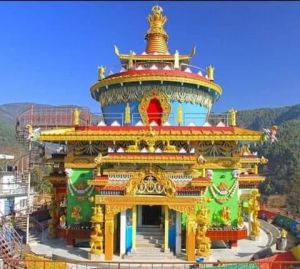Abhidharma-kosa (Abhidharmakosa- basyam)
The Abhidharma-kosa, one of the greatest works of Buddhism, is a fundamental text studied to this day by most BHIKSU (Buddhist monks). It is, liter- ally, a commentary (basyam) on the kosha (“store- house”) of the ABHIDHARMA. The Abhidharma is one of the three parts of the traditional TRIPITAKA, the writings accepted as scripture by Buddhists.
The Abhidharma-kosa, as the work is usually referred to, is divided into chapters, each dealing with a major conceptual category, such as the dhatus (elements) or the indriyas (sense organs).
It presents definitions of all fundamental concepts in Buddhist thought: abhidharma itself (“discernment of the dharmas”), dharma, klesas, skandhas, rupas, and more.
The Abhidharma-kosa was extremely influential, both in India and later in such areas as CENTRAL ASIA and CHINA. It generated a vast commentarial literature itself. The Abhidharma-kosa was written by the fourth-century Indian scholar VASUBANDHU (c. 316–396). At the time, he was a monk in Kashmir. He did not strictly adhere to the SARVASTIVADIN school, but he presented the Abhidharma-kosa as a careful exposition of the VAIBHASIKA philosophers, a branch of Sarvastivadin thought.
